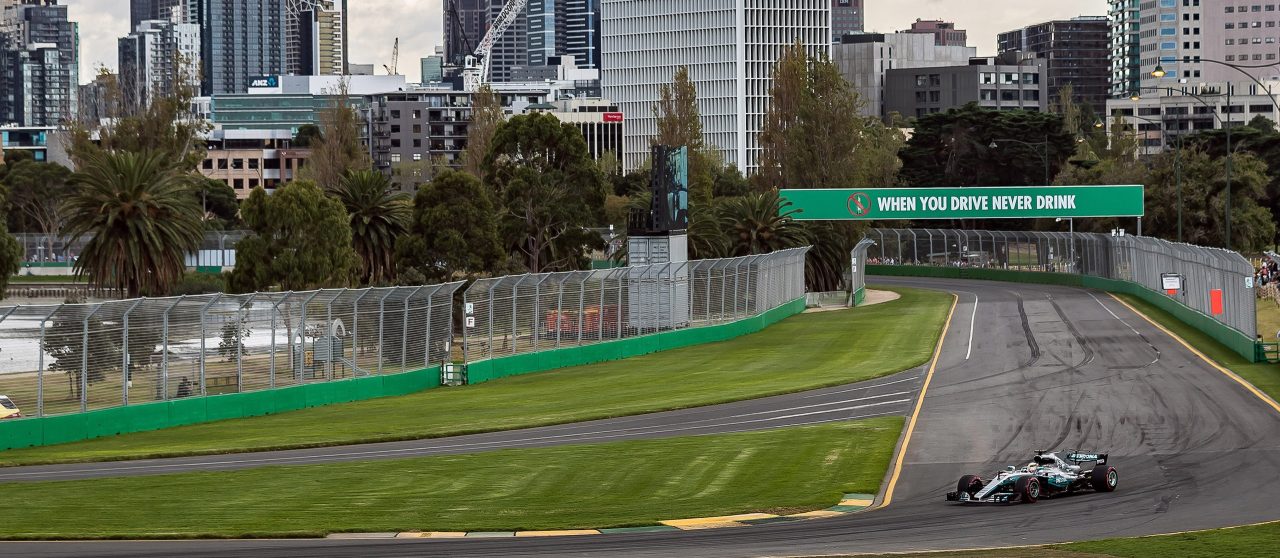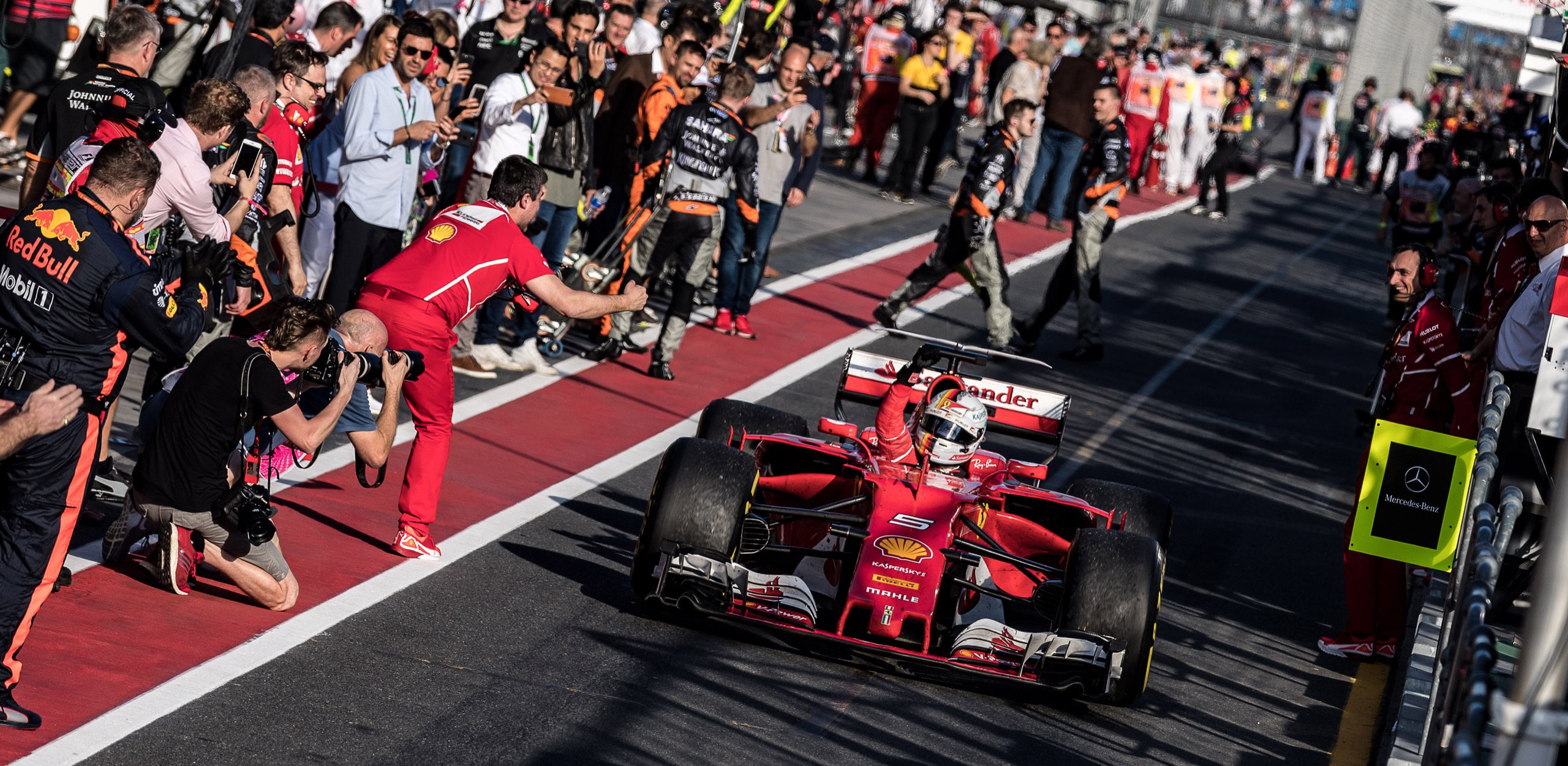
Sebastian Vettel thoroughly manhandled Mercedes at the Australian Grand Prix, capturing his first win since the 2015 Singapore Grand Prix. Piloting the “new-think” SF70H, Vettel’s fast, stable and aero-neutral game changer is designed to deliver a turbulent challenge to Mercedes’ three-year hold on the title.
Teams assembled their 2017 Albert Park strategy as a one-stop race on Sunday with around 22 laps on the ultrasofts with a switch to the supersofts for the run to the flag. Around them, new owners Liberty Media produced a more open and user-friendly paddock for the first Grand Prix of the post-Ecclestone era, distributing plenty of additional passes and encouraging greater driver interaction with the larger crowds; Fernando Alonso was especially keen; he seemed to always be in mid-embrace with a fan.
Based on Mercedes’ solid preseason testing form, Lewis Hamilton arrived in Melbourne as the presumptive 2017 world champion in waiting. New teammate Valtteri Bottas was quick in testing, but capturing a Grand Prix is all that matters, and he has not demonstrated he’s ready to win in F1’s most dominant car.
Ferrari had been ominously quiet since the end of last season, from president Sergio Marchionne down through every Scuderia member, choosing to let their 2017 testing form speak for the team’s chances. The SF70H looks fast and immediately took a liking to every compound of the new Pirelli wide tyres during Barcelona testing to the point where pundits were claiming the team was sandbagging. To their consternation, Melbourne was the site where Ferrari threw away a Vettel win last season with a bad pit call. It was now necessary for them to weave their quick preseason form with aggressive strategies if they hoped to pull even with Mercedes this season.
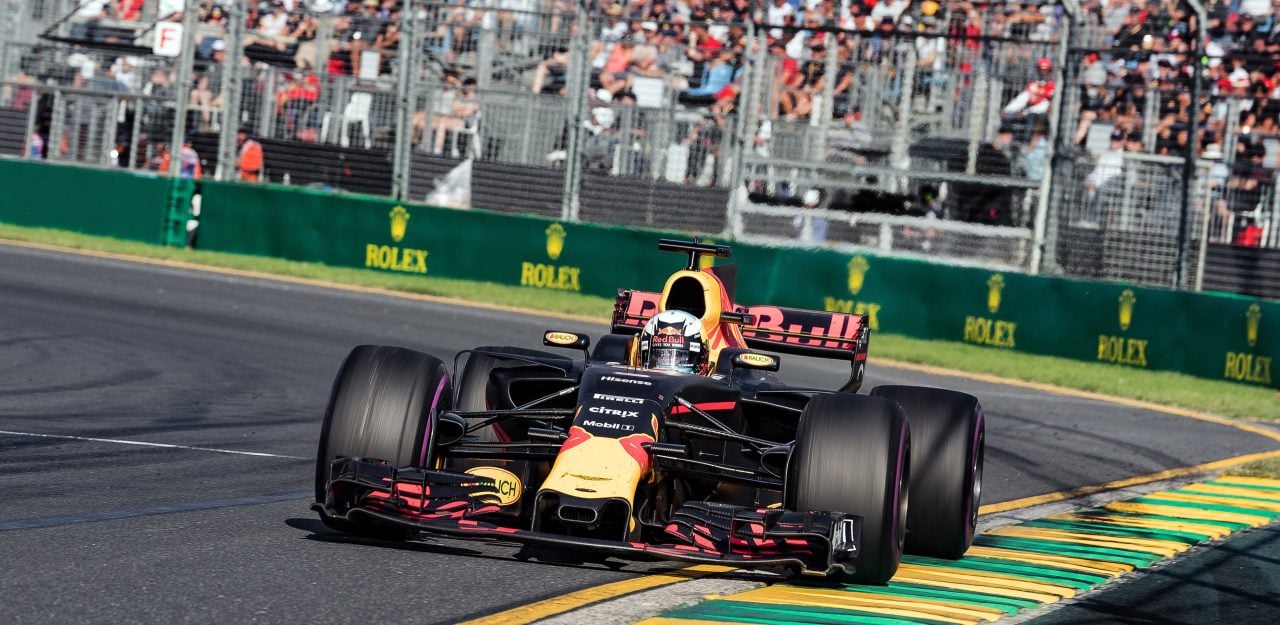
Red Bull brought a practically new car to Melbourne compared to their preseason aero-sparse test chassis. Full of designer Adrian Newey’s latest wind tunnel magic, it would need the full attention of Daniel Ricciardo and Max Verstappen to transform the aero shapes into a winning car. Bets were it would take until Spain to find the right combination.
McLaren returned to experience their familiar Honda PU nightmare, showing a stiff upper lip as they braced for underpowered engines until the European races in late Spring.
Qualifying saw Hamilton on pole with Vettel just 0.268 seconds behind and Bottas just a tick back in third. Kimi Raikkonen qualified fourth followed by Verstappen and a surprisingly aggressive Romain Grosjean in the resurgent Haas F1.
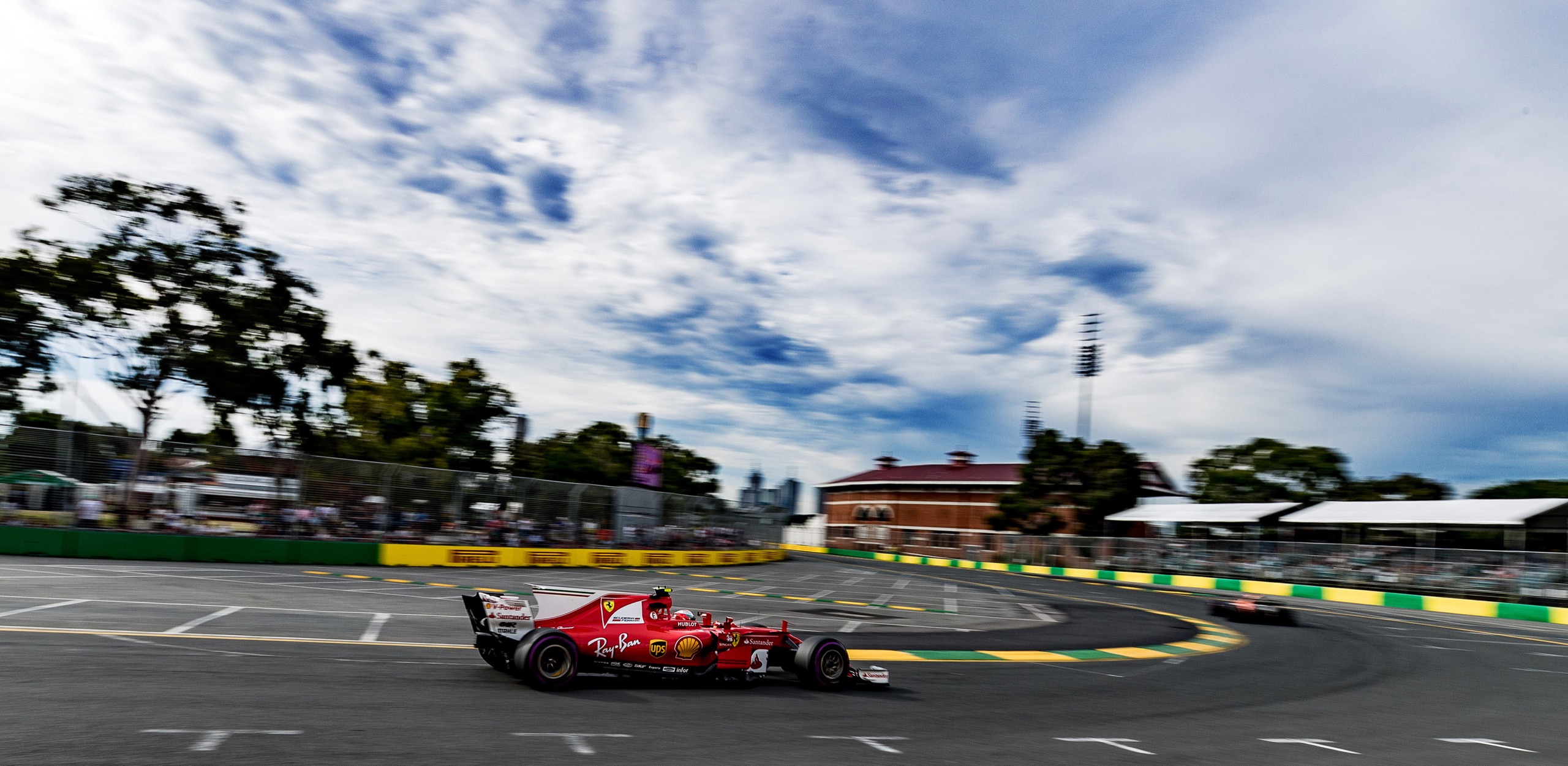
Hamilton had been getting plenty of wheel spin in practice with the now FIA-mandated manual starts, but when it counted most, he nailed it, leaving Vettel in his wake when the lights went out. However, Hamilton couldn’t extend his advantage over Vettel to more than 1.8 seconds as the duo began pulling away from Bottas and Raikkonen.
Such was Vettel’s constant pressure that even in the clean air, Hamilton reported this Mercedes was quickly wearing out his tyres as soon as lap 5. By lap 17, he dived for the pits to switch to the soft Pirelli compound. However, Mercedes had brought him in earlier than planned, just as the Ferrari strategists had done to Vettel in 2016. The result was similar. As Hamilton emerged, he found himself in dirty air in the midst of several mid-pack cars and directly behind fifth-placed Max Verstappen. While Mercedes designed its cars to lead from the front in past seasons, it’s apparent with the new formula 2017 regulations; any Mercedes advantage crumbles when it follows in another competitive car’s “dirty” air.
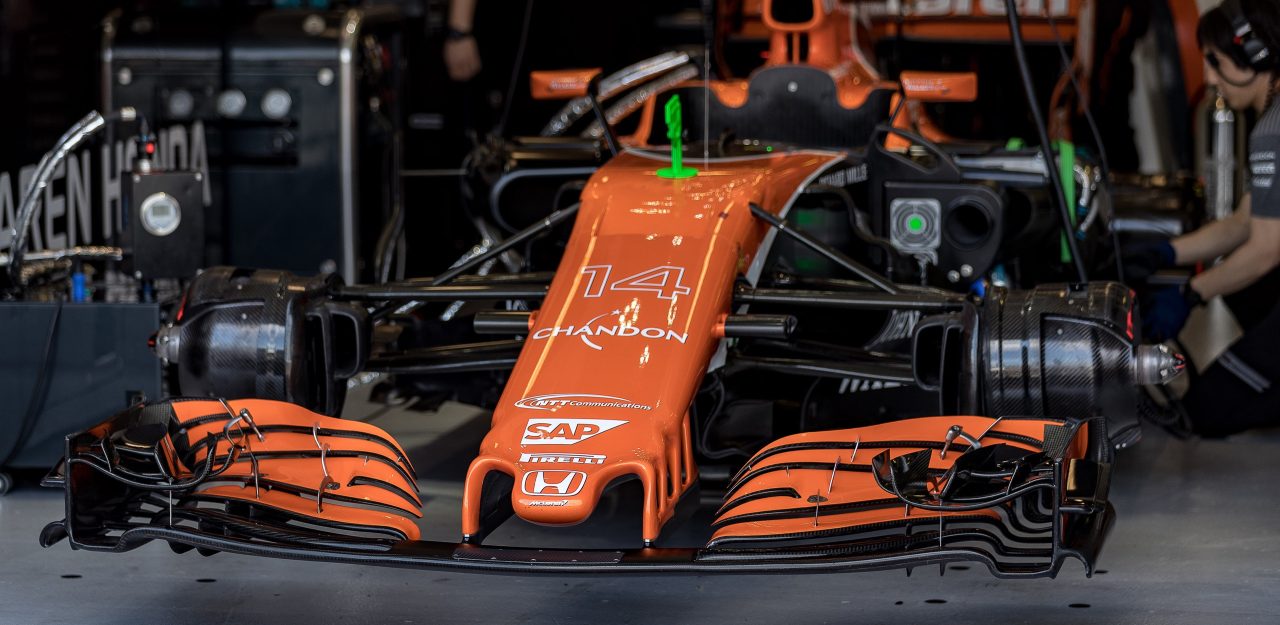
With Hamilton complaining to the team there was “nowhere to get past” Verstappen, Vettel, now in the lead was able to stretch his advantage to 23-seconds before making his only stop on lap 22. Vettel returned to the track ahead of Verstappen and again, with his SF70H comfortable in both clean and turbulent air extended his lead to nearly 10-seconds at the flag for the victory, his 43rd career win and Ferrari’s first in 28 Grands Prix. Behind him were Hamilton, the hard-charging Bottas, the reserved Raikkonen, Verstappen, and the un-retired Felipe Massa, the last driver on the lead lap. Sergio Perez finished seventh, in front of Toro Rosso drivers Carlos Sainz and Daniil Kvyat. Rookie Esteban Ocon scored his first F1 point in 10th thanks to his hair-raising late race pass over Alonso’s McLaren.
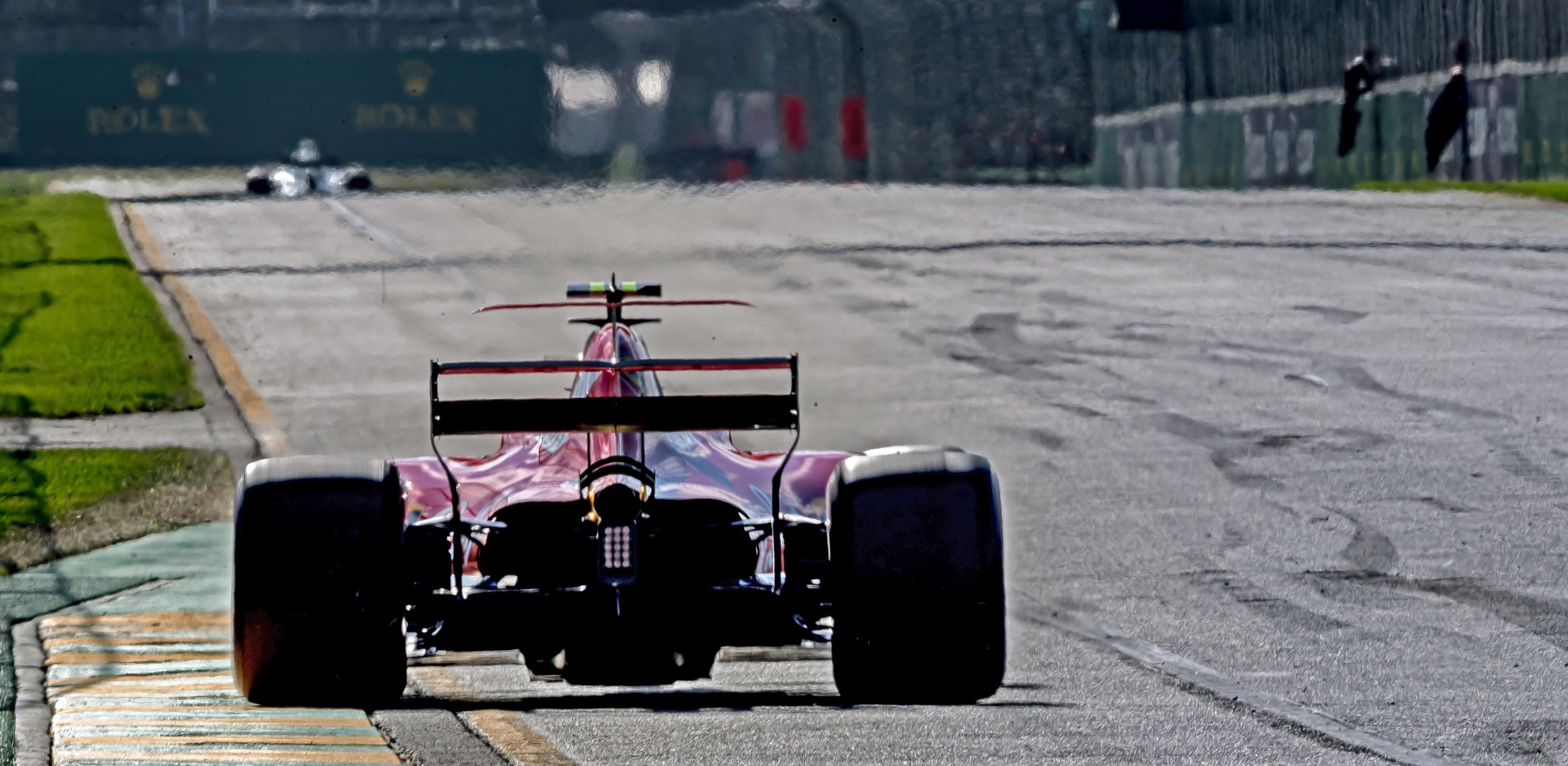
Sebastian Vettel erased 4,925 miles of Grands Prix race distance disappointment since his last win, 28 races ago at the 2015 Singapore Grand Prix to take a convincing victory in Melbourne. He looked like the Vettel of four World Driving Championships with Red Bull as he set up his car to be quickest when it counted over the 25 closing laps. He instantly put Mercedes on notice that 2017’s remaining 19 challenges aren’t going to be another Silver Arrows walkover. Indeed, Vettel’s win signified the first time in the V6 turbo era that Mercedes has not led the championship.
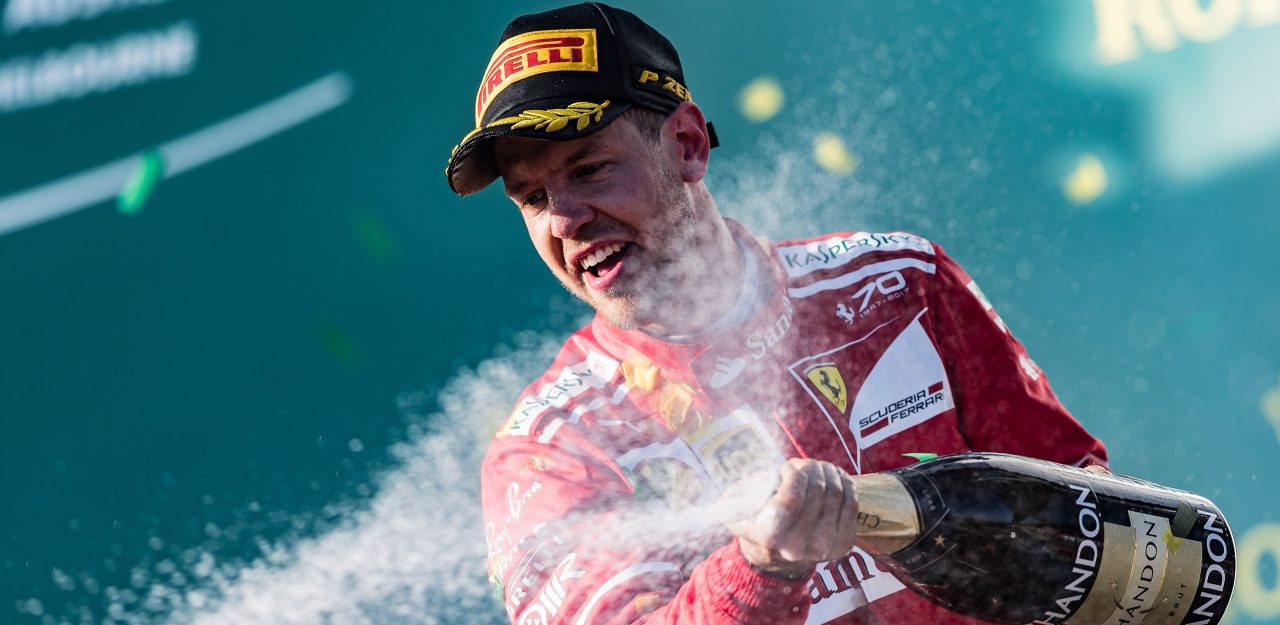
Sebastian Vettel: “I think what you’ve seen today was just a glimpse of how intense the last couple of months have been! A heavy burden was lifted from our shoulders today. Now we have to do our ‘thing’ and not let anybody distract us.”
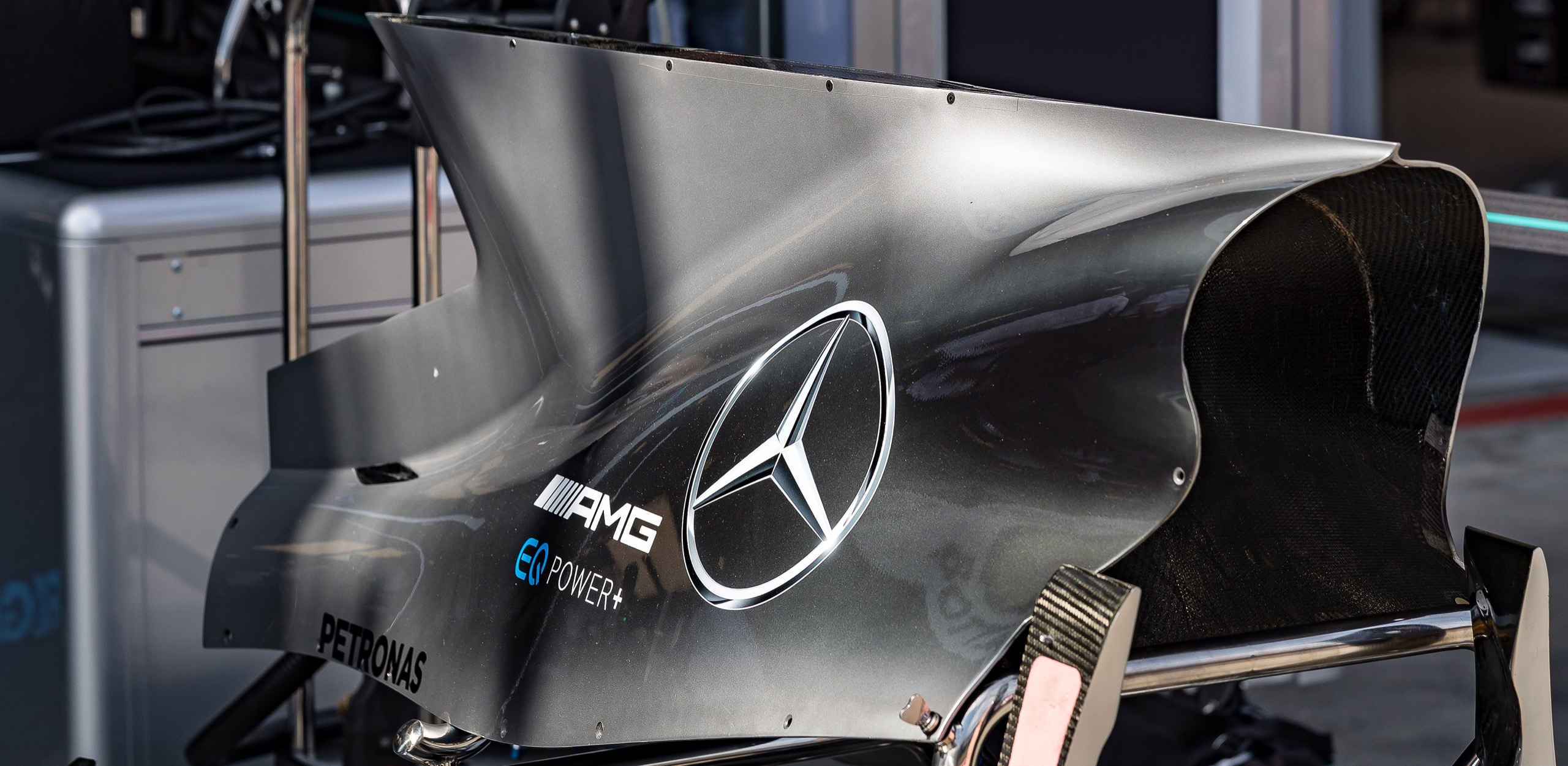
Hamilton’s Mercedes was:
Last year’s Mercedes would have qualified 5th with 1.23.837 if it had competed in 2017.
The current world champions lost a race win for just the ninth time in the last 60 grands prix.
These are the realities new competition director Ross Brawn needs to considering when charting a path for closer, less predictive and more competitive racing this season and forward to 2020.
Although Ferrari captured the Cup in Melbourne, it’s not a track that favours the SF70H strengths. Look to high-speed corner and aero circuits like Barcelona, Silverstone, Spa and Monza to complement Ferrari’s new tarmac-hugging winner.
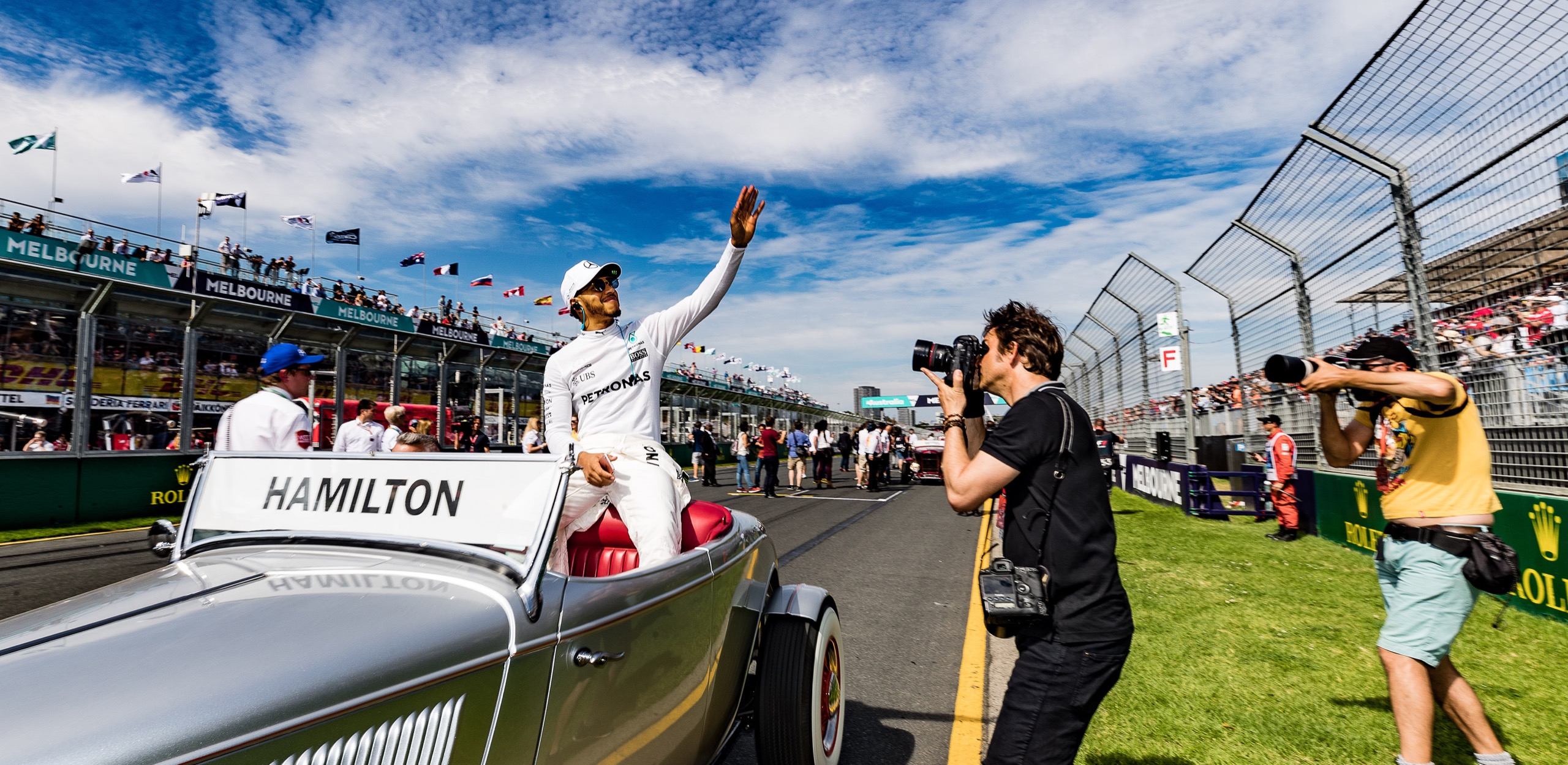
With 51 victories in the last 60 Grands Prix, Mercedes became accustomed to leading from the front and designed their cars to operate best in clean air. Ferrari has countered this with SF70H aero that thrives in both clean and turbulent air. Vettel was able to pressure Hamilton from behind, not leaving him a moment to relax. With Hamilton forced to push his Mercedes’ tyres to the point of grip failure too early in the race, he had to stop for a new set out of “traffic” sequence. When he rejoined the race he was relegated to slot in among slower, less aero optimised cars thus restarting the cycle of high wear on his fresh tyres. Game over.
Antonio Giovanazzi, Macau F3 graduate and GP2 Championship runner-up, went to sleep Friday night as the Sauber reserve driver and woke up Saturday morning as a starter, taking over from the still hurting Pascal Wehrlein. While his qualifying in 15th with no time in a power-handicapped yet significantly more physical car was gritty, his 12th place finish using a year-old Ferrari power unit was simply brilliant and speaks volumes for his F1 potential. Keep your eyes on a future Ferrari team candidate.
Now it’s on to the Grand Prix of China in Shanghai on April 9th.
